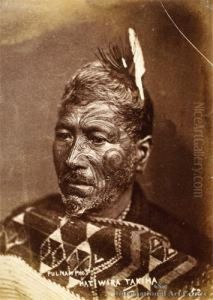George Julian Zolnay Paintings
George Julian Zolnay was a Hungarian-American sculptor born on July 4, 1863, in Budapest, Hungary. Often referred to as the 'sculptor of the Confederacy', he became a prominent figure in the American South for his commemorative works and monuments. Zolnay studied at the Imperial Academy in Vienna, Austria, where he honed his craft under the guidance of renowned artists. His talent was soon recognized, and he was awarded a scholarship to further his studies in Paris.
In the 1890s, Zolnay immigrated to the United States, where he initially worked on various sculpture projects in New York. However, his career truly started to flourish when he moved to the American South. He became a celebrated artist in the region, especially known for his bronze statues and memorials. One of his most famous works is the Confederate Monument in Athens, Georgia, which showcases his ability to capture both the human form and the sentiments of an era.
Zolnay's work extended beyond public monuments; he was also adept at creating busts, garden sculptures, and decorative pieces. His style was characterized by a blend of realism and an attention to emotional detail, which made his statues stand out and resonate with the public. In 1909, he became the director of the art school at the St. Louis Museum of Fine Arts, a position he held until 1917, which allowed him to influence a new generation of artists.
Throughout his career, Zolnay's work received significant recognition. He was awarded the gold medal at the St. Louis World's Fair in 1904 for his sculpture 'The Fountain of the Setting Sun'. Beyond his sculptural endeavors, he was also an active member of the artistic community, contributing to the development of fine arts in the region.
George Julian Zolnay continued to produce art until his later years, leaving behind a rich legacy of sculptures that offer insight into the cultural and historical landscape of his time. He passed away on May 1, 1949, in New York, leaving a lasting impact on American sculpture, especially in the Southern United States. His works remain on display in various museums and public spaces, testifying to his skill and artistic contribution.
